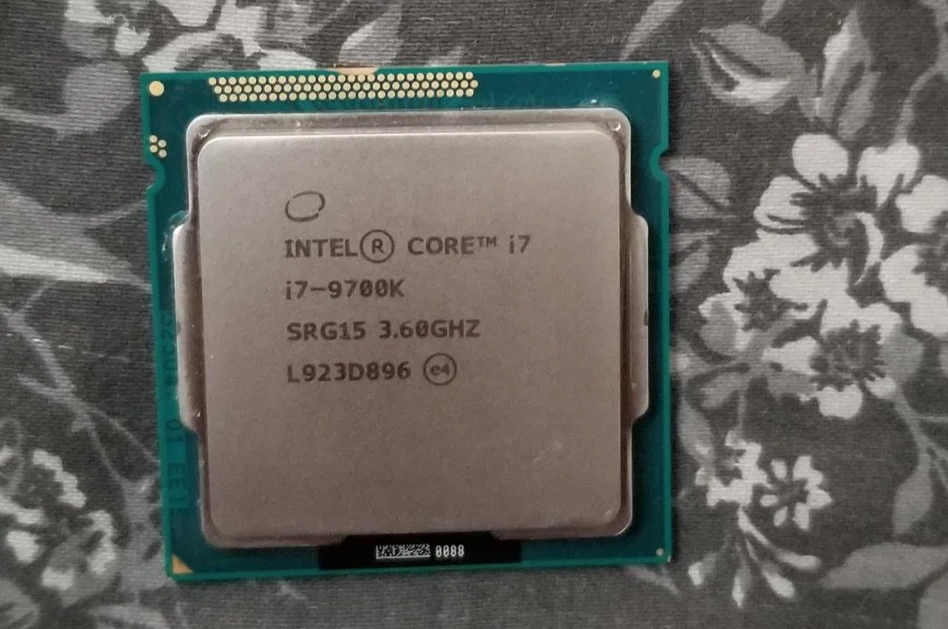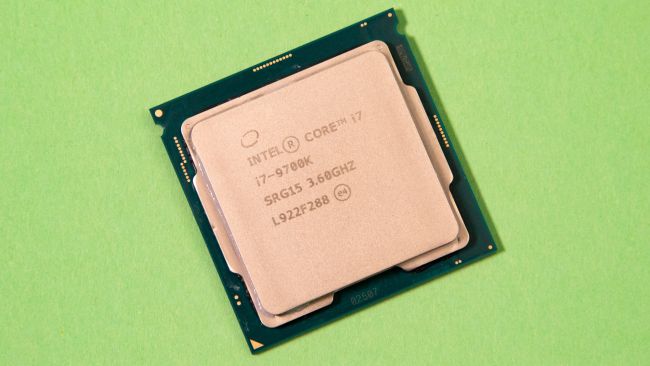How to Avoid Buying a Fake CPU
Get what you’re paying for.

Components don’t come cheap, which explains the booming market for used processors. Some people sell their old CPUs to fund the new ones, while others buy used processors as a way to save money when building a PC. (To find the best processors, check out our CPU Buying Guide.)
But when you purchase used chips on the internet, you need to be careful. While there are many honest sellers buying and selling in online stores and communities across the web, there are also fakes floating about.
Some fakers are cunning, so you have to be vigilant. Here are some tips to help you avoid buying a fake CPU.
Compare photos
One of the most prolific bait-and-switches we’ve seen around the web is sellers who shave off some of the integrated heat spreader (IHS), the metal covering around the silicon to help transfer heat. Then, the scammer re-engraves what’s left of the IHS with text that suggests it’s a better, more powerful, more expensive chip.
If you’re buying on eBay, Craigslist or community forums like Reddit, make sure you get a picture from the seller. If they haven’t posted a photo, ask for one. If they don’t have one, skip it.
With a photo, you can compare chips to ensure you’re getting what you plan to pay for. If you can get one with the date written down on a piece of paper, that’s even better to verify when it was taken.
For instance, on Reddit we recently saw a fake Intel Core i7-9700K. The person who bought it found that it didn’t fit in their motherboard. But when you compare their photo of the chip to other pics found through reliable sources online, such as trusted publications or stores, it doesn’t match up.


The fake, seen above on a black background, has some subtle differences when compared to a photo of an authentic one (seen on a green background). Perhaps the most obvious is that there are many contacts (the little gold dots) that aren’t in the place they should be. In fact, those match Intel’s old fourth-gen "Haswell" processors. It’s very possible that the Core i7-9700K branding, which otherwise largely matches up with a real CPU, was shaved and re-engraved.
You also have to check for the socket orientation keys — the notches on the processor that make it fit in the socket on the motherboard. If those are wrong, you're getting a different chip than what you're expecting and it won't fit in your PC.
Avoid excessive glue
If you see a bunch of glue in a picture on or the chip surrounding the IHS, that may be bad news. It’s possible that the owner de-lidded a more expensive chip and put its heat spreader on a less expensive one. In that case, it may even still fit in the socket on your motherboard.
Make sure fonts look right
The other thing to look at closely in photos as a tell are the fonts.
アキバ取材班B▼秋葉原最終処分場にて、ちょっと危険なブツを発見。近頃オークションなどで出回っているというRyzen 9 3900Xのニセモノで、もちろん動作せず。「旧世代Ryzen 3あたりのヒートスプレッダを削って刻印し直したモノでは」とのこと pic.twitter.com/YZRfnViSqcJanuary 10, 2020
On Twitter, we recently saw a picture of what one may think is an AMD Ryzen 9 3900X. The user, @hermita_akiba pointed out that the IHS was shaved down. You can tell just by looking closely that the fonts don’t all match up. Even in “3900X,” the last three characters are bolder and not evenly printed.
Check seller history and ratings
You should really do due diligence on the seller no matter what you’re buying, and especially if the product is used.
On eBay, you can click on the seller’s name on the right side of an auction or sale. There, you can see what others have said about products, including if they arrived as described.
It’s harder on sites like Craigslist, where sellers are anonymous. On forums, there’s often a paper trail. Some require both buyers and sellers to confirm trades, so you can go through that way. Others also rely on Heatware, a service where buyers and sellers can rate each other on trades and transactions completed on forums and social networks.
Check in software
To make sure you got what you paid for, check in some software after you’ve installed the processor. (That is, if the CPU you got actually fits in your motherboard.) Try CPU-Z, Windows 10 settings and device manager, and, for Intel processors, consider the company’s own diagnostic tool.
Is buying used worth it?
There are a number of communities where people buy, sell and swap computer parts every day, and chips can be found for sale on other platforms.
But when you’re buying used, you are taking a risk, however slim, that you don’t get what you paid for. If the deal doesn’t save you a bunch of money, you’re better off buying new, which will include a warranty. (Of course, if you’re buying new, make sure it’s from a reputable seller.) Bigger stores are also more likely to allow for returns if you do get something you’re not expecting.
And as always, if a deal is too good to be true, it usually is.
Get Tom's Hardware's best news and in-depth reviews, straight to your inbox.

Andrew E. Freedman is a senior editor at Tom's Hardware focusing on laptops, desktops and gaming. He also keeps up with the latest news. A lover of all things gaming and tech, his previous work has shown up in Tom's Guide, Laptop Mag, Kotaku, PCMag and Complex, among others. Follow him on Threads @FreedmanAE and BlueSky @andrewfreedman.net. You can send him tips on Signal: andrewfreedman.01
-
g-unit1111 Also check the seller. I bought a memory card off Amazon that turned out to be a fake and when I contacted SanDisk about it they said to look out for overseas sellers that aren't directly from places like Amazon or Newegg and sure enough I did, and I wasn't the only one who bought a fake SanDisk memory product. Thankfully Amazon refunded all my money and it's one of those things where you get what you pay for.Reply -
Gaaldornick I definitely disagree on the seemingly over the top worry regarding eBay purchases.Reply
EBay protects buyers to a comical degree.
There is NO situation where you could be sent a fake processor and not get your money back. You wouldn't even pay shipping to return the fake one. It would just be a costly nuisance for the fraudulent seller. -
Crashman Reply
Absolutely correct. In fact, you can buy the real thing and return a fake and eBay will downgrade the seller's status if he contests the return.Gaaldornick said:I definitely disagree on the seemingly over the top worry regarding eBay purchases.
EBay protects buyers to a comical degree.
There is NO situation where you could be sent a fake processor and not get your money back. You wouldn't even pay shipping to return the fake one. It would just be a costly nuisance for the fraudulent seller.